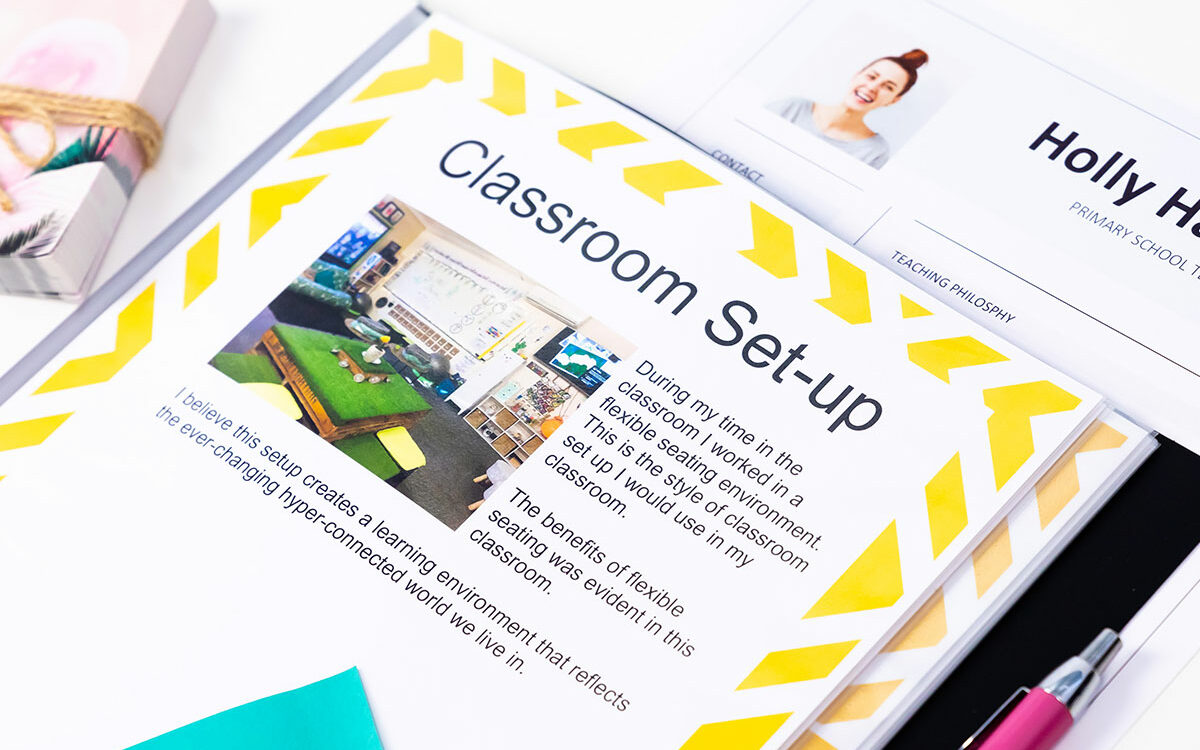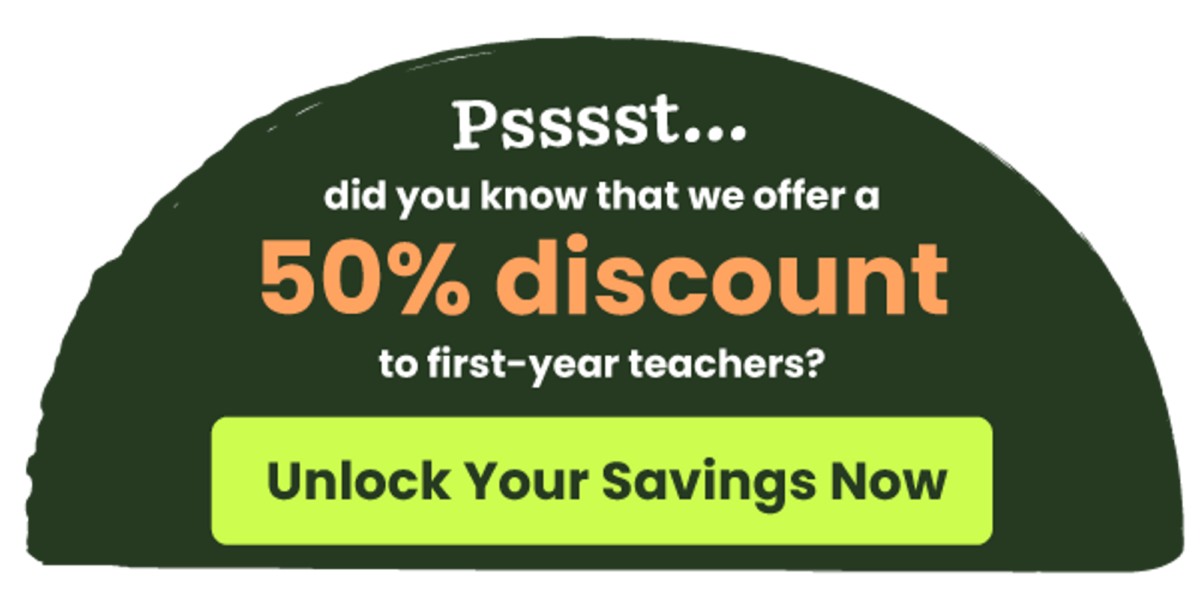Once student teaching is over, and you’ve got that teaching degree, it’s time to start applying for teaching jobs. So how do you land a teaching interview? Do you need a teacher portfolio? And what about a teacher resume?
The team creating resources for Teach Starter has all been right in your shoes — we’re teachers too, after all — and has pulled together all you need to know about not just surviving that interview but thriving through the process.
Do I Need a Teaching Portfolio?
A teacher portfolio is stocked with everything from professional development experiences to student data to thoughts on pedagogy in order to showcase your experience as a teacher. But do you really need one?
Although the administrators and other members of any interview panels you speak with may not require you bring a teacher portfolio, having visual evidence to refer to during the interview will only enhance your answers to the questions and show your professional knowledge. A teacher portfolio can help boost your confidence as you know that you have something that you can fall back on if you get a little bit of “interview brain block,”
See the most common teacher interview questions and how to answer them!
Depending on where you’re applying to teaching jobs, some schools will provide you with a couple of questions 15 minutes before the interview so that you can prepare some answers. This is where the portfolio is handy again. Take some trusty sticky notes with you, and write notes and section off parts of your portfolio you can refer to while answering these questions.

What Do I Put in My Teaching Portfolio?
If you’ve decided you want to create a teaching portfolio, the next question is what to put in it. Here’s a sampling of the sorts of things common to teacher portfolios:
- Philosophy of Education – This is a true reflection of what you believe. A reflection about your teaching and a way to indicate goals and corresponding actions for you in the classroom.
- Qualifications and Certificates – Detail all qualifications and certificates that you have received.
- Classroom Management – What are your beliefs and strategies for classroom management? Show evidence of this from your recent student teaching.
- Behavior Management – What’s your behavior management style? Add photos of things you have implemented during your student teaching for this one.
- Parent Communication – Talk about how you communicated with parents while student teaching and how important parent communication is in your teaching. Show an example of a Meet the Teacher letter template that you would send home for parents, or perhaps a Classroom Newsletter template you would send home for parents.
- Classroom Set-Up – When you enter your own classroom, how will you set it up? Give reasons for why you believe this is an effective way to set up a classroom.
- Lesson Plans – Include a couple of lesson plans that you are proud of.
- Assessment and Tracking– Include examples of how you assessed students during your student teaching and how you kept track of their progress while you were teaching.
- Teacher Collaboration– Include examples of collaborating with other teachers/educators during your student teaching.
- Differentiation in the Classroom– Include examples of how you differentiated in the classroom. It may be a copy of a lesson plan that you created where you could effectively differentiate the activities to suit the needs of the students in the classroom.
- Extra-Curricular Activities– Did you do any extra activities during your student teaching? Examples could include glow day, a taste and read, etc. Show your initiative to put your hand up for things in this section.
Teach Starter teacher tip: Use photos in your portfolio where it’s possible. Examples of classroom activities, classroom set-up or anything that you can use to show off your teaching philosophy and ideas.
How Do I Apply for Teaching Jobs?
Applying online, talking to the administrators at the school where you did your student teaching, talking to your professors … there’s a long list of ways you can apply for teaching jobs.
Either way, if there is a particular school you are interested in, drop into the office and hand in your resume, ask for a tour of the school. Don’t just do a stock standard cover letter for every school you visit, do your research and tailor the cover letter to suit each school. What is it about that school that makes you want to work there, and what is it about that particular job that is right for you?
Not sure how to format or set up a cover letter or resume? Download our editable resume and cover letter template.
Banner image via shutterstock








Comments